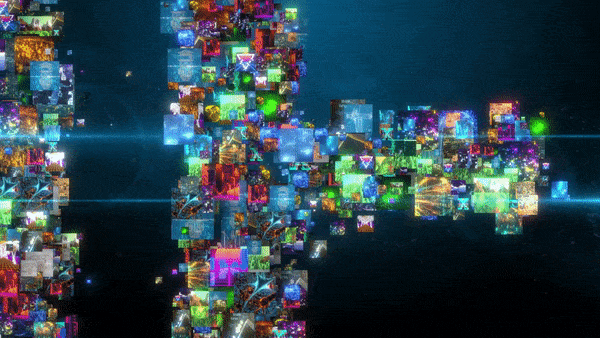
We should stop dismissing the sky-high price of some digital art sales as being the misguided judgement of millionaires with more money than artistic sense.
NFTs are not pieces of art to be collected and admired, but investments to be analyzed and speculated on, Héctor San José blogs at IE Insights.
Critics may carp that many NFT artworks have no intrinsic quality that makes them valuable but this misses the point.
“This is a completely misguided perspective,” says José, “because the high-end art market has not been about art for a long time. It is simply a fact: the gold rush has nothing to do with gold itself, but with its value.”
As a quick summary, NFTs are files based on blockchain technology (non-forgeable and traceable) which are used in the art world as a certificate of ownership of a piece of artwork that can have infinite copies. This is how, for example, a jpg file — which anyone can replicate and download from the Internet — can be sold for millions of dollars.
READ MORE: NFT: The Wrong Questions (IE Insights)
However, their use is not only restricted to digital works; the Hermitage, the Uffizi Gallery, and the British Museum have already sold shares in NFTs of physical works that hang on their walls.
The “digitalization” of real pieces of art is also being driven by crypto entrepreneurs like Justin Sun. He spent $78 million on an NFT of Giacometti’s sculpture, “Le Nez,” $20 million on a digital token of Picasso’s “Femme nue couchée au collier,” and another couple million on Andy Warhol’s “Three Self Portraits.” He has donated all of them to his foundation, APENFT, which intends to market digital versions of the NFTs.
“Cryptocurrencies have become a way of looking at life, an ideology of decentralization, deregulation, and dematerialization,” José suggests. “This industry has a community of investors who are so convinced that this new type of currency is going to change the world that they are much more than just shareholders.”
READ MORE: Forget About the Metaverse — Justin Sun Spent Over $78m on Art Piece “Le Nez” (Business Wire)
For some time now, record-breaking works have not been collected, but invested in. As José points out, these works are stored, often in freeport locations where they stay tax-free between purchases. They don’t even adorn the walls of their new owners. The painting became a product and now a financial asset.
“In this scenario, the capacity of a work to make you richer — and the publicity its possession brings — is valued more than a genuine interest in art,” he says.
THE ABCs of NFTs:
Are NFTs just more hype, or are they actually the building blocks of the creator economy? Understanding blockchain technology can seem like a lot, but NAB Amplify has the expert knowledge and insights you need to remain at the top of the intersection of art and technology:
- NAB Amplify’s NFT Primer
- What’s the Real Future of the NFT Crypto Art Market?
- Weird Science: The Connection Between NFTs and… Human Nature?
- What Is the Value of an NFT?
- NFTs: Content Strategy or Digital Craze?
Crypto and tokenization have just accelerated the trend, driving the record-breaking prices of works that no one is going to see on a daily basis, that no one is going to study, bequeath, or enjoy; they are only going to resell.
It may be a sad reality, but José thinks the people best placed to assess the digital art market (possibly the art market full stop) are not art connoisseurs, but “raw entrepreneurs and investors without any expertise,” who simply focus on analyzing sales data, assigning a serial number to pieces “so they don’t even have to see them,” and making forecasts to please new buyers.
“We need to accept the schism between art for speculation and art for collecting,” he insists. “We must accept that these are the new categories that define the market (not chronology, subject matter, or technique). Until we do, art lovers will keep asking the wrong questions about NFTs.”




